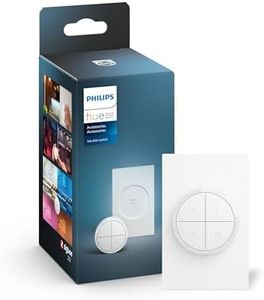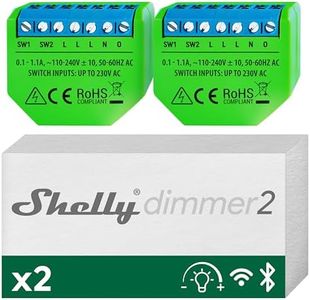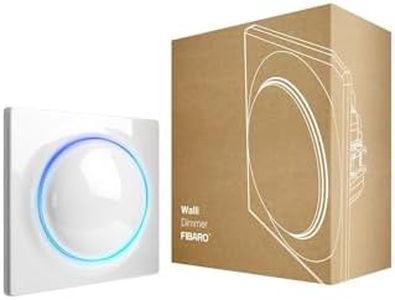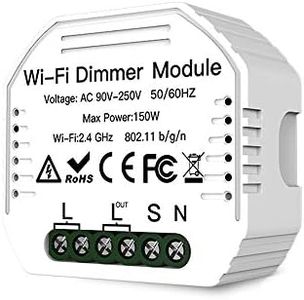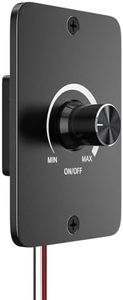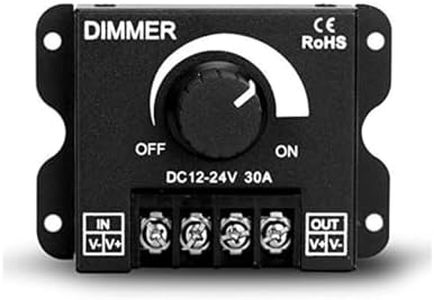We Use CookiesWe use cookies to enhance the security, performance,
functionality and for analytical and promotional activities. By continuing to browse this site you
are agreeing to our privacy policy
10 Best Led Dimmer Switches
From leading brands and best sellers available on the web.By clicking on a link to a third party's website, log data is shared with that third party.
Buying Guide for the Best Led Dimmer Switches
Choosing the right LED dimmer switch can make a big difference to the comfort, energy savings, and flexibility of your lighting setup. Not all dimmer switches are created equal—some are better suited for particular types of bulbs, load sizes, or control preferences. It's essential to understand the key features that matter most so you pick a switch that works safely and predictably with your lights, fits your control style, and offers the smooth adjustment you expect.Bulb CompatibilityBulb compatibility refers to whether or not the dimmer switch can properly control the type of bulbs you are using, such as LED, incandescent, or CFL. This spec is crucial because using an incompatible dimmer can lead to flickering, buzzing, or even damage to your bulbs. Dimmer switches are often marked as 'LED compatible' or 'universal.' Some older dimmers only work with incandescent bulbs, while most newer ones are designed specifically for LED or can handle multiple types. If you're using LED bulbs, always opt for a dimmer that states it is compatible with LEDs—ideally tested with the brand or type of bulbs you have at home.
Wattage/Load RangeWattage or load range tells you the minimum and maximum total wattage that a dimmer can safely handle. This is important because using a dimmer with a load that's too low or too high can cause performance problems or even safety hazards. Dimmer switches are divided into segments based on their load: low-load dimmers are often required for LED installations, which use less power than traditional bulbs, while higher load models are necessary for larger groups of lights or non-LED options. To pick correctly, add up the wattage of all the bulbs on the dimmer's circuit and make sure it falls within the dimmer's stated load range.
Dimming Method (Leading Edge / Trailing Edge)Dimming method refers to how the dimmer switch reduces the brightness of the bulbs: leading edge (also called TRIAC) or trailing edge (also known as ELV or electronic low voltage). This is important because different bulbs require different dimming technologies for smooth and silent operation. Leading edge dimmers are more basic and often best for older, incandescent bulbs, while trailing edge dimmers are typically quieter and provide better performance with modern LEDs. For best results, check your bulbs' specifications or packaging for the recommended dimmer method.
Control StyleControl style describes the physical way you interact with the dimmer switch, such as rotary knobs, sliders, touch panels, or standard up/down rocker switches. The right style for you depends on your personal preference, dexterity, and the aesthetics of your room. Rotary and slide dimmers offer a tactile feel and are great if you want precise manual adjustment. Touch or smart dimmers add a modern look and extra features, and are often easier for children or the elderly to use. Consider what will be easiest and most comfortable for everyone in your household.
Single-Pole vs. Three-Way CompatibilityThis spec determines if your dimmer can be used alone to control a single light from one location (single-pole), or if it can be combined with other switches to control the same light fixture from two or more locations (three-way or multi-location). This is important if you have stairways, large rooms, or hallways where you want to adjust lights from multiple points. To pick the right type, check your current wiring and decide where you need control points for lighting. Choose a dimmer with the appropriate compatibility.

